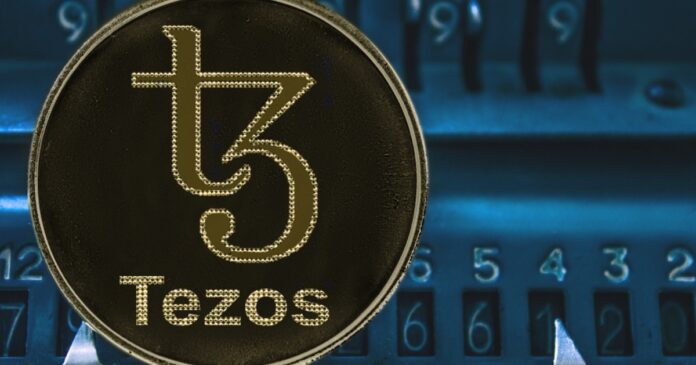Tezos (XTZ) has introduced a revamped staking experience with the Paris protocol upgrade, offering new opportunities for participants to secure the network and earn rewards. This comprehensive guide explains how to stake on Tezos, different staking scenarios, and their implications, according to Tezos Spotlight.
Staking and Baking: An Overview
Staking on Tezos involves choosing a baker and letting your funds contribute to that baker’s stake. These funds remain in your account but are frozen and subject to economic penalties, known as slashing, if the baker misbehaves. Baking, on the other hand, involves running a machine that participates in securing the network, producing blocks, maintaining consensus, and voting on governance issues. Bakers receive rewards proportional to their stake for their work and the associated risks.
Delegation vs. Direct Staking
Delegation allows users to contribute to a baker’s stake without freezing their funds. However, delegated funds carry only half the weight for receiving baking rights and rewards compared to directly staked funds. Additionally, rewards from delegated funds are paid to the baker, who may or may not redistribute them to the delegators.
Becoming a Staker
To start staking, users must delegate their account to a chosen baker using the ‘set delegate’ command in Octez or via their wallet’s interface. After delegating, users can add stake with the ‘stake’ command. Removing stake involves the ‘unstake’ command, and changing bakers automatically unstakes all funds, which remain frozen for about 11 days before they can be finalized and restaked.
Understanding Rewards
Staking rewards are paid to the staker’s account and automatically become part of their stake. The rewards rate, which can fluctuate between 0.25% and 10% annually, is determined by the Adaptive Issuance mechanism. This mechanism adjusts the rewards rate based on the share of tez staked, aiming for a target of about 50% of the total supply.
Managing Overstaking
Overstaking occurs when the total stake exceeds a baker’s limit, resulting in reduced rewards for all stakers. Bakers can accept up to five times their own stake from external stakers, but any amount beyond this limit is treated as delegated and generates only half the rewards. It’s crucial for stakers to monitor their baker’s capacity and ensure they are not contributing to overstaking.
Practical Scenarios
Consider a baker named Brian who stakes 4,000 tez and sets a limit of 20,000 tez for external stake. If two stakers, Susan and Simon, each stake 10,000 tez, Brian reaches his limit. However, if a third staker, Sarah, adds another 10,000 tez, Brian becomes 50% overstaked. This scenario illustrates the importance of monitoring staking limits to avoid reduced rewards.
Ensuring Optimal Staking
To optimize rewards and maintain network health, stakers should regularly check their baker’s capacity, limits, and policies. Any changes in the baker’s stake can affect the overall staking scenario, so continuous monitoring is essential.
For further information and community support, users can visit the Tezos Agora forum. Happy staking!
Image source: Shutterstock
Credit: Source link






















 Bitcoin
Bitcoin  Ethereum
Ethereum  XRP
XRP  Tether
Tether  Solana
Solana  USDC
USDC  Dogecoin
Dogecoin  Cardano
Cardano  Lido Staked Ether
Lido Staked Ether  TRON
TRON  Wrapped Bitcoin
Wrapped Bitcoin  Wrapped stETH
Wrapped stETH  Chainlink
Chainlink  Avalanche
Avalanche  Sui
Sui  Stellar
Stellar  Litecoin
Litecoin  Toncoin
Toncoin  Shiba Inu
Shiba Inu  Hedera
Hedera  LEO Token
LEO Token  USDS
USDS  Hyperliquid
Hyperliquid  WETH
WETH  Polkadot
Polkadot  MANTRA
MANTRA  Bitcoin Cash
Bitcoin Cash  Bitget Token
Bitget Token  Ethena USDe
Ethena USDe  Wrapped eETH
Wrapped eETH  Uniswap
Uniswap  Monero
Monero  NEAR Protocol
NEAR Protocol  Pepe
Pepe  WhiteBIT Coin
WhiteBIT Coin  Aave
Aave  Ondo
Ondo  Bittensor
Bittensor  Aptos
Aptos  Internet Computer
Internet Computer  Dai
Dai  Official Trump
Official Trump  Mantle
Mantle  Ethereum Classic
Ethereum Classic  Tokenize Xchange
Tokenize Xchange  OKB
OKB  Gate
Gate  sUSDS
sUSDS  Coinbase Wrapped BTC
Coinbase Wrapped BTC 
